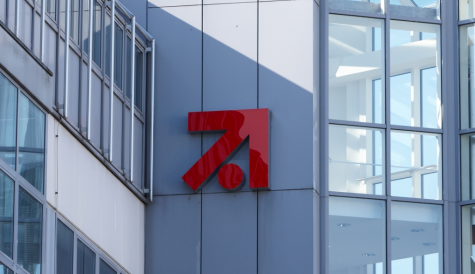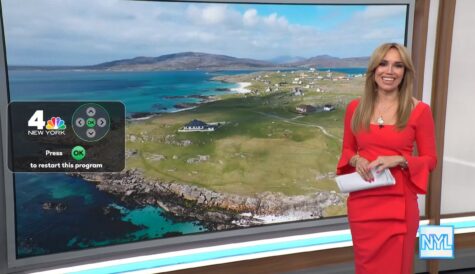African exchange: digital switchover problems and pay TV opportunities
The African pay TV market is growing, but delays and disruptions continue to plague the analogue-to-digital switchover. Andy McDonald reports.
The pay TV market in Sub-Saharan Africa continues to grow, with new lower-priced entrants beginning to offer consumers different options from likes of MultiChoice – which has long been the leading force in pay TV on the continent.
Azam Media, based out of Tanzania, has made strong progress in the past year, and has its sights set on expansion, while Wananchi Group, the pay TV and broadband operator that owns the Zuku brand, recently raised US$130 million (€102 million) to help finance further growth in East and Southern Africa. Elsewhere, China-based StarTimes last year invested in South African pay TV operator TopTV, rebranding it StarSat with plans for DTH launches across the region in partnership with satellite operator SES.
However, despite this progress, sub-Saharan Africa’s TV market still has a long way to go. By the end of 2013, there were 12.5 million pay TV subscribers across the sub-Saharan region out of a total 47.2 million TV households, according to Ovum statistics. While pay TV penetration has climbed from 8% of TV homes in 2005 to 27% in 2013, the overall proportion of homes with TVs was just 30% of sub-Saharan Africa’s total 155 million households – with this proportion tipped to only rise to 35% in 2019.
Added to this, Ovum estimates that the “vast majority” of sub-Saharan countries will miss the June 2015 cut-off for analogue to digital switch-off, as mandated by the International Telecommunication Union (ITU), with many already seeking deadline extensions. A recent report by Digital TV Research instead said that “nearly every home will be converted by 2020.”
Christoph Limmer, director of commercial development, broadcast and video at Eutelsat says that while it seems some countries will not be able to make their 2015 switchover deadline, DTT has still “created a momentum in the broadcast industry and is definitely accelerating the demand we see when it comes to DTH opportunities, projects and business models”.
“We have been closely following the development of broadcasting in Africa over the past years but it’s over the last 12 months that we have seen the highest demand for satellite capacity. This is partly because of digital migration and partly because broadcasters want to be received in a broader footprint to expand their audience,” says Limmer. “The message we get from the broadcasters and regulators from different countries is that they understand that successful digital migration means combining DTH and DTT. Most countries understand that they will not be able to achieve 100% coverage – as we see already in Europe and North Africa – without a combination of infrastructures.
Jean-Philippe Gillet, Intelsat’s vice president, Europe, Middle East and Africa sales, agrees that this combination of terrestrial and satellite infrastructure is the way forward – using MultiChoice, as a case in point. The firm, which operates the DStv platform, is the largest pan-regional pay TV service provider, with seven million DTH customers at the end of 2013. Yet at the same time, it has also launched and is now growing a DTT offering under the GOtv banner, which counted 680,000 subscribers at the end of last year.
“For me, it’s a good example of someone in Africa who is already involved in the media sector and that is then deploying solutions that are helping the local government to speed up the transition to digital,” says Gillet.
In April this year, MultiChoice signed a deal with Intelsat to expand its C-band capacity on Intelsat 904 at 60° East so it can distribute content to its terrestrial towers for DTT services. The deal will allow it to expand GOtv to target new countries, as well as grow its offering in countries where it is already present – including Nigeria, Ghana, Uganda, Kenya, Rwanda, Zambia, Namibia and Malawi.
The Azam example
Two months later, MultiChoice also extended its DTH partnership with Intelsat, signing a new 15-year service agreement to deliver services to sub-Saharan Africa via the operator’s new Intelsat 36 satellite, which is expected to launch in late 2016. The satellite will be co-located with Intelsat 20 at 68.5° East, Intelsat’s main DTH spot for Africa.
Also on the expansion path is Azam Media. Launched in December last year, the firm is part of Bakhresa Group, a Tanazania-based conglomerate that provides products and services as diverse as ice cream, bottled water and plastic packaging. It also runs passenger ferry services and owns Azam Football Club, the reigning champions of Tanzania’s Vodacom Premier League.
Azam Media CEO Rhys Torrington claims that Azam Media has sold 170,000 subscriptions to date, demonstrating the demand for pay TV. “The Azam model is very much at the entry level price,” he says, claiming that Azam is not luring viewers from Zuku or DStv, but adding net new customers. “We charge US$8 per month subscription, which sounds like peanuts in Europe. Of course, it’s still quite expensive here, but compared to some of the other prices, it actually is good value for money.”
Azam media has recently expanded to Uganda, is set to open in Kenya and Zambia and has signed a distribution agreement for Sierra Leone – although plans there are temporarily on hold due to the recent Ebola outbreak. Rollouts are also expected in Rwanda, Burundi and Malawi before the end of the year, says Torrington.
“By this time next year, I would, with the exception of South Africa, expect to have a presence in any English-speaking country in sub-Saharan Africa,” says Torrington. He says to do this, Azam will largely look to set up joint ventures – a move designed to keep set-up and infrastructure costs down and ease the licensing approval process.
The growth of Azam Media is not without precedent. Indeed it is not even the first time Torrington has helped lead such efforts. From 2007 to 2009, Torrrington was chief operating officer and commercial director of Gateway Broadcast Services – the provider of GTV, a now defunct multi-channel DTH pay TV service that operated in English and French across sub-Saharan Africa.
During its short life, GTV made major waves, winning the rights to broadcast English Premier League football, as well as backing several domestic leagues including those of Ghana, Tanzania and Uganda. Overall, the firm spent a total of US$200 million and created jobs and competition in 22 markets.
“When we won the rights for the Premier League in Sub-Saharan Africa, we had caught DStv asleep at the wheel. It was the first time that the Premier League had split the rights out between South Africa, Nigeria and the rest [of the continent],” says Torrington.
However, after this initial coup, the firm knew it would have to dig in deep in order to keep hold of these newly won rights.
“At GTV, we were more than aware that we would have to bid significantly more three years after the first bid to secure it for the next round. For a small company, that was always going to be impossible, so the exit plan was always either to sell the business or to link up with somebody else who did have deep pockets,” explains Torrington.
Opting for the former, in 2008 Gateway Broadcast Services reached a memorandum of understanding with Canal+.
Clearly impressed with GTV’s progress and the opportunities provided by the African market, Canal+ was preparing to buyout the business – before the recession hit.
With the global economic environment taking a turn for the worse, a high stakes bet on an emerging market was clearly not to be. The proposed deal, which was never publicly reported, fell through, following which Gateway Broadcast Services went into liquidation in January 2009.
“Increased instability in global markets interrupted our ability to secure funding on an acceptable timescale and have left us no choice but to cease operations,” said a company spokesman at the time, commenting on the company’s closure.
Zuku fibre and DTH
In October this year, Wananchi Group closed a US$130 million round of funding from existing shareholders, including major cable firms Liberty Global and Altice, African private equity firm Emerging Capital Partners, Mauritius-based ATMT and new African investor Helios Investment Partners.
Announcing the cash injection, vice-chairman Richard Bell said the money would be used to consolidate the firm’s position in East Africa and to extend its services in the East and Southern parts of the continent – including continuing the deployment of fibre-to-the-home networks in more cities in East Africa.
Zuku’s head of programming, Catherine Njari, says that Wananchi’s cable infrastructure will be rolling out to “several East African countries.” Currently, Zuku’s fibre offering is concentrated in the Kenyan cities of Nairobi and Mombasa, where Zuku provides broadband, pay TV and telephony services through a single cable into customers’ homes.
Traditionally, cable TV and IPTV have only been taken up by a tiny proportion of people in sub-Saharan Africa.
According to Ovum statistics, of all the homes in Sub-Saharan Africa, 69.6% have no TV, 21.2% are on analogue terrestrial, 6.6% have DTH and 2.2% are served by DTT. This leaves cable and IPTV with 0.4% and 0.1% respectively.
As Eutelsat’s Limmer points out, there are infrastructure issues that arise from laying cable, that are avoided in DTH broadcasting. “What happens, not just with the cable for television, but also with fibre in Africa, [is] you install the cable and the next day someone digs it out again, they cut it, they sell it. In Nigeria for example, the government has now put soldiers on the ground to protect fibre.”
Perhaps with this in mind, Wananchi is also looking to expand the firm’s DTH business in 2015, following launches this year in Malawi and Zambia. Zuku also already offers satellite TV in Kenya, Uganda, Tanzania.
With this platform growth comes an increase in content, with Zuku having already grown its own channel offering from a handful of Zuku-branded stations to more than 10 – including Zuku Entertainment, Zuku Sports, Zuku Life and a number of Zuku movie channels.
“Where Africa is heading to cable, of course [cable] is important, but [the] main infrastructure is not an easy task. So yes, our content business more is in the DTH business and our content business remains critical, hence the reason DTH expansion is going to increase into 2015. This year we’ve done Malawi and Zambia, so in 2015 we will be going into more East African countries as regards to our DTH platform. We introduced a kids channel, Zuku Kids, last year, [in] around November. We also introduced a Swahili channel that is specific to Swahili movies that come from Tanzania,” says Njari, claiming that new channel launches are dictated by market needs and the territories that Zuku launches in.
“We’re not only creating and managing branded channels. We also build our very own commissioned or local content, which means we’re engaging more and more [with] producers,” says Njari. She mentions successes like: political drama State House; musical drama show Groove Theory, which is now in its second season; and Krazy Kool Show, an original commission for the Zuku Kids channel.
Modern Times
While homegrown African channels are rising in prominence, European broadcaster Modern Times Group (MTG) is also seizing the opportunities afforded by a growing pay TV market in sub-Saharan Africa. In October, the firm launched four factual entertainment channels for the first time in Malawi on the Zuku platform. Viasat Crime, Viasat Explore, Viasat History and Viasat Nature are already available in Nigeria, Kenya, Uganda, Tanzania and Rwanda on a combination of Zuku’s and StarTimes’ pay platforms, as well as through some smaller operators.
“We don’t really have a regional emphasis. We really would like to go pan-African,” says Joseph Hundah, executive vice-president of MTG’s African operations, pointing to South Africa as a particular area of interest.
Aside from its own pay TV channels, MTG boosted its standing in Africa earlier this year when it completed its 75% buyout of youth-orientated channel group Trace, which has a strong foothold on the continent. “The view really for us is that Africa has got a very high growth potential and we like Trace’s presence in Africa, what they’re doing in Africa, and also the different innovative products that they want to launch in Africa. As an example, right now we’re launching a number of products on the mobile side, offering mobile products to Airtel, which is one of the major telcos in Africa,” says Hundah.
On top of this, MTG this year launched a free-to-air general entertainment channel in Tanzania called TV1. This is only MTG’s second African free-TV channel, following the launch of Viasat1 in Ghana in 2008.
TV1 will show a mixture of locally produced news and entertainment content, such as talkshow Boys Boys, as well as international movies and series, but Hundah explains that MTG’s local content offering in Ghana is “significantly more advanced” with a combination of acquired as well as own-produced shows.
While this free-to-air footprint promises to benefit MTG when digitisation takes place across sub-Saharan Africa, Hundah says that this will be a long-term outcome as “all Africa is lagging seriously behind in terms of implementation”.
“So far it’s only Tanzania and Mauritius that have launched DTT and the deadline is June 2015, as you know. This for me is pretty scary,” says Hundah. Even in markets where digitsation has occurred, he argues that governments are making a “huge mistake” in not fully understanding the impact that digital migration will have on current free-to-air players.
“What we saw in Tanzania, as an example, is that as soon as digital migration took place, immediately almost half the advertising market was wiped out. The main reason for this is, number one, the network hadn’t been fully implemented there across the country, and, number two, the government hadn’t really done, I would say, a solid job of educating the consumer about digital migration – what it means, what do they have to do to continue to enjoy watching free-to-air television and what the difference is in terms of quality, availability of channels etc.”
Another significant issue when it comes to digital migration, Hundah argues, is that there is not enough effort being put in to ensure that there are enough decoders and digital TVs in the market to handle the switchover. “The problem [is] that most consumers in Africa are too poor to buy the decoders – that’s the honest truth. Decoders are trading at anything between US$20 and US$100. That’s a lot of money for the average consumer. I don’t think enough has been done to try and subsidise the price of those boxes and to make sure that those boxes are affordable at a price that the consumer can afford,” he says.
Azam Media’s Rhys Torrington agrees that “murky” deadlines for digital switchover make it harder to plan, especially when major players in the marketplace such as Uganda and Kenya appear to have seen their deadlines slip.
“From a business point of view, it is incredibly difficult to plan the way we develop a service when there are still so many uncertainties around something that should have been certain, which is the switchover date,” says Torrington.
Yet despite this, Eutelsat’s Limmer believes that momentum in the African free-to-air market has never been stronger. “In the past years I have never seen so much demand for free-to-air – there is a huge development taking place. Our 16° East position over francophone Africa is a good example. In the last two years we have built up a neighbourhood which now consists of more than 50 free-to-air channels which are public and private broadcasters from Francophone countries. Broadcasters are also getting more open to new business models, including basic encryption. So the whole digital migration has not just created a momentum for satellite, but has also created momentum for various business models across Africa.”
With more growth expected to follow in the African pay TV market in years to come, pay TV’s final frontier may slowly but surely star to be coming of age.




